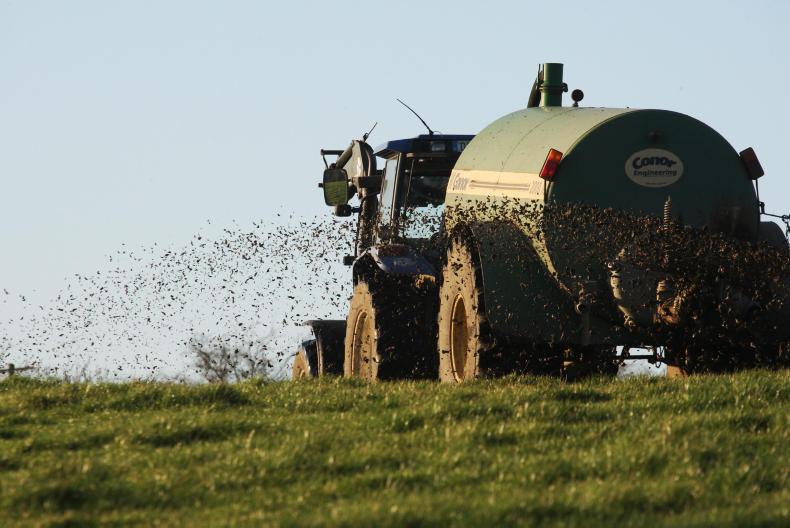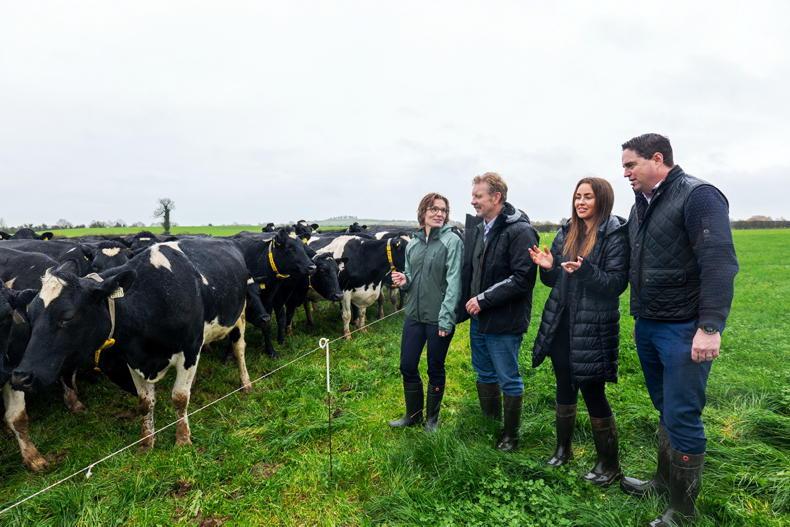Minister of Housing, Planning and Local Government Eoghan Murphy signed the new Nitrates Action Programme into law on Wednesday afternoon.
The new law will be effective from 1 January for a period of four years. It is understood that there were no late changes to the action plan, officially known as the Good Agricultural Practice for the protection of Waters.
This is the fourth renewal of the Nitrates Action Programme, and sees some gains for farmers. The most significant is the renewal of a derogation allowing intensively-stocked farmers to avail of 250kg of organic nitrogen per hectare, as opposed to the standard 170kg/ha limit.
There are some new restrictions on derogation farms – half of winter slurry must be spread by 15 June, and any slurry spread after that date must be done with a low-emission system such as a dribble bar or ground injection machine. There are fears that there isn’t enough suitable equipment available to carry out such a workload in 2018, with calls for a TAMS.
Slurry actions ‘unworkable’
Among the other progressive steps is an increase in the phosphorus allowance for low index (Index 1 and 2) soils and the permission to apply chemical N and P on autumn-sown crops up to the end of October. Transitional arrangements for pig slurry have been extended through to 2021.
Farmers will be concerned about a measure prohibiting the passage of runoff of dirty water from farm roadways to groundwater, but they have until 2021 to become familiar with that measure.
The IFA Environment chairman Thomas Cooney welcomed the renewal of the derogation, but described the measures around slurry spreading as “unworkable”, calling for a postponement of the slurry storage and spreading changes until 2019, and a TAMS rate of 70% to be applied to low emission slurry equipment, with the TAMS open to contractors as well as farmers to tool-up the sector for the task in hand.
Read more
Stricter rules for farmers in next Nitrates Action Programme
Environmental challenge is not going away – Hogan
Minister of Housing, Planning and Local Government Eoghan Murphy signed the new Nitrates Action Programme into law on Wednesday afternoon.
The new law will be effective from 1 January for a period of four years. It is understood that there were no late changes to the action plan, officially known as the Good Agricultural Practice for the protection of Waters.
This is the fourth renewal of the Nitrates Action Programme, and sees some gains for farmers. The most significant is the renewal of a derogation allowing intensively-stocked farmers to avail of 250kg of organic nitrogen per hectare, as opposed to the standard 170kg/ha limit.
There are some new restrictions on derogation farms – half of winter slurry must be spread by 15 June, and any slurry spread after that date must be done with a low-emission system such as a dribble bar or ground injection machine. There are fears that there isn’t enough suitable equipment available to carry out such a workload in 2018, with calls for a TAMS.
Slurry actions ‘unworkable’
Among the other progressive steps is an increase in the phosphorus allowance for low index (Index 1 and 2) soils and the permission to apply chemical N and P on autumn-sown crops up to the end of October. Transitional arrangements for pig slurry have been extended through to 2021.
Farmers will be concerned about a measure prohibiting the passage of runoff of dirty water from farm roadways to groundwater, but they have until 2021 to become familiar with that measure.
The IFA Environment chairman Thomas Cooney welcomed the renewal of the derogation, but described the measures around slurry spreading as “unworkable”, calling for a postponement of the slurry storage and spreading changes until 2019, and a TAMS rate of 70% to be applied to low emission slurry equipment, with the TAMS open to contractors as well as farmers to tool-up the sector for the task in hand.
Read more
Stricter rules for farmers in next Nitrates Action Programme
Environmental challenge is not going away – Hogan










SHARING OPTIONS